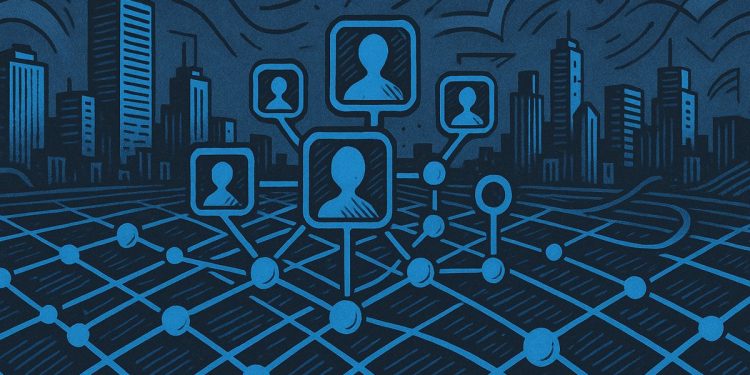AGNTCY is a new open-source tool for building smart AI agents that can talk to each other safely and easily, no matter where they are. Cisco gave this technology to the Linux Foundation, so anyone can use it without paying fees. Big tech companies like Dell and Google Cloud are already joining in, and real businesses are testing it right now. AGNTCY helps agents find and trust each other, exchange messages, and work together, making it simpler for people to build connected AI systems. Experts think this will help more companies use AI agents and grow the market a lot.
What is AGNTCY and why is it important for AI agents?
AGNTCY is an open-source infrastructure for AI agents, donated by Cisco to the Linux Foundation. It enables seamless discovery, secure messaging, identity verification, and observability across clouds and vendors, allowing developers and enterprises to build interoperable, agent-based systems without licensing fees or vendor lock-in.
Cisco has handed over the keys to its cutting-edge AI agent infrastructure, AGNTCY, to the Linux Foundation. The move instantly turns what had been a proprietary orchestration stack into an open-source toolkit that any developer, start-up, telco, or Fortune-500 enterprise can download, inspect, and extend without licensing fees or vendor lock-in.
What AGNTCY actually delivers
| Layer | Purpose | Open building blocks |
|---|---|---|
| Discovery | Find agents across clouds, data centers, and edge nodes | DNS-like registry + tamper-proof digital passports |
| Identity & trust | Prove who/what an agent is | Cryptographic credentials issued via OASF |
| Messaging | Secure, low-latency, cross-vendor chat | SLIM protocol + observable SDKs |
| Observability | Debug probabilistic, distributed agents | Metrics, tracing, replay logs |
These four layers form the proposed “Internet of Agents” – a shared substrate on which autonomous systems from different creators can discover each other, negotiate tasks, and exchange data without human intervention.
Who is already in the room
The governance charter lists Cisco, Dell, Google Cloud, Oracle, and Red Hat as formative members, with more than 65 additional companies backing the project. Dell’s CTO John Roese explicitly called the donation a step to “fulfil the promise of agentic AI” inside enterprise pipelines, while telecom vendors see AGNTCY as a way to stitch together security, observability, and billing agents across hybrid telco clouds.
Real pilots, not slide-ware
- Enterprise pilots: Dell is integrating AGNTCY into multi-agent reference architectures for hybrid clouds
- Telco trials: Cisco and partners are testing cross-vendor orchestration of networking, security, and customer-care agents
- Code you can run today: Cisco published coffeeAGNTCY , a demo application that shows an MCP server, an A2A agent, and an AGNTCY agent collaborating to order coffee – proving the protocols already co-exist
Market tailwind
A May 2025 PwC survey of 300 executives found:
- 79 % are already adopting AI agents
- 66 % of adopters report measurable productivity gains
- 25 % of generative-AI users expect to launch agentic pilots this year (Deloitte, Nov 2024)
Bank of America pegs the agentic AI market at $155 billion by 2030, and analysts view open, standardized stacks such as AGNTCY as the fastest route for vendors and end-users to capture that value without re-inventing infrastructure.
Bottom line for builders
Download the AGNTCY Application SDK, spin up a registry, and your agents can begin advertising capabilities, verifying identities, and negotiating tasks with anyone else on the network – whether they live in your private data center, a competitor’s public cloud, or a coffee machine at the edge.
What is AGNTCY and why did Cisco donate it to the Linux Foundation?
AGNTCY is an open-source infrastructure for the “Internet of Agents” – a foundational layer that lets AI agents from different vendors discover each other, prove their identity and exchange messages securely. Cisco donated the entire project to the Linux Foundation in July 2025, moving it from single-vendor control to neutral, community governance. The goal is to break down agent silos and give every organisation access to production-grade orchestration tools without lock-in.
How does AGNTCY enable cross-vendor AI agent collaboration?
Think of AGNTCY as DNS plus encrypted mail for AI agents. It provides:
- Agent discovery directory – agents can publish what they do and find partners
- Tamper-proof digital passports – cryptographically verifiable identity and access rights
- SLIM secure messaging – a low-latency protocol optimised for agent chatter
- Observability SDKs – end-to-end visibility into what distributed agents are doing
With these building blocks, an agent built with LangGraph can seamlessly call an agent running on Google Cloud or an on-prem Dell server, without the developers having to negotiate custom APIs.
Which industry giants are already backing the project?
Beyond Cisco, the Linux Foundation lists 65 + companies as supporters. Founding members include:
- Dell Technologies (CTO John Roese: “Interoperability is central to Dell’s agentic AI vision”)
- Google Cloud
- Oracle
- Red Hat
Dell has already confirmed it is “working hand-in-hand with industry leaders to establish open standards for agentic interoperability” using AGNTCY.
What real-world pilots are running today?
As of August 2025 the technology is moving from lab to live environments:
- Enterprise pilots: Dell and other members are integrating AGNTCY in multi-agent workflows inside hybrid data-centres.
- Telco trials: Cisco and Dell – both major telco vendors – are using AGNTCY for cross-vendor security and networking pipelines.
- Reference app: Cisco open-sourced coffeeAGNTCY, a demo that shows a LangGraph agent ordering coffee by orchestrating agents exposed via MCP, A2A and AGNTCY simultaneously.
PwC’s May 2025 survey of 300 senior executives found 79 % are already adopting AI agents and 66 % report measurable productivity gains, confirming the market pull for solutions like AGNTCY.
How big is the agentic AI market expected to become?
Bank of America Global Research projects the agentic AI market could reach 155 billion USD by 2030. With AGNTCY now under neutral Linux Foundation stewardship, the bet is that a shared, open infrastructure will let companies capture that value faster by reducing duplicate engineering and speeding up safe deployment.



















